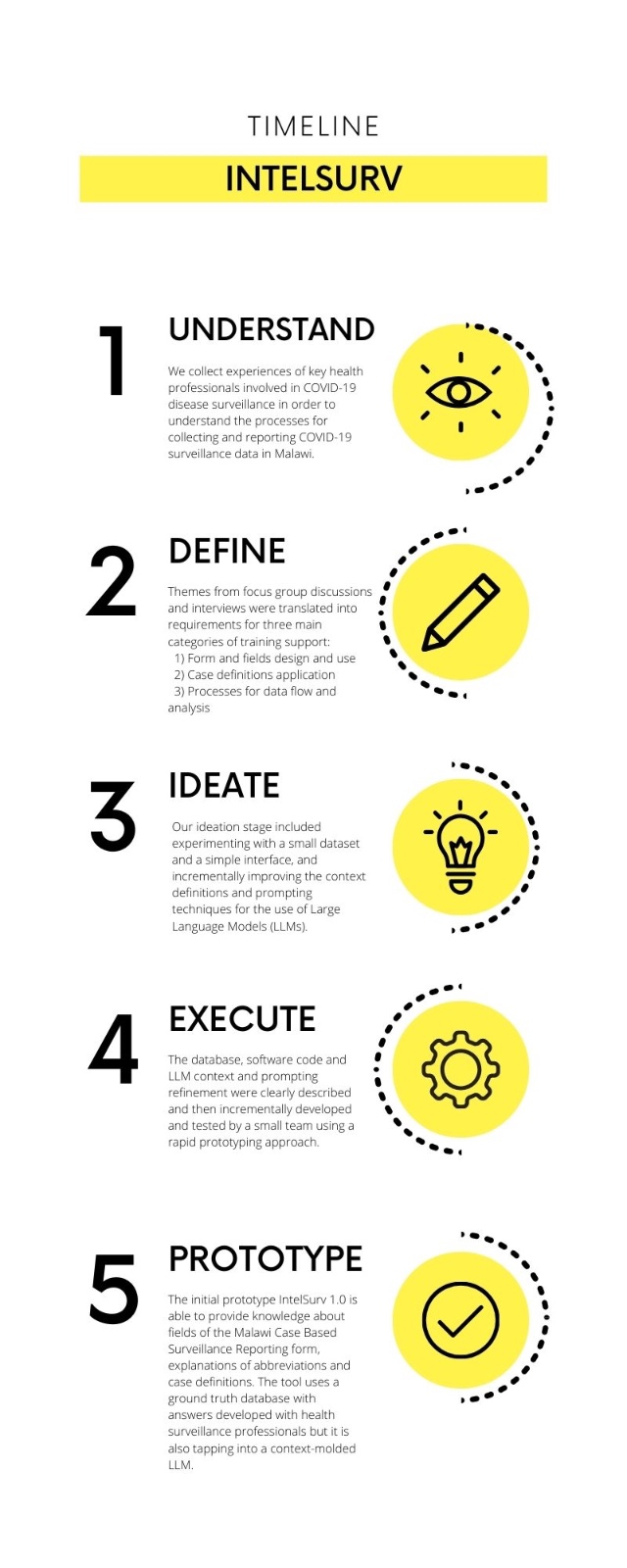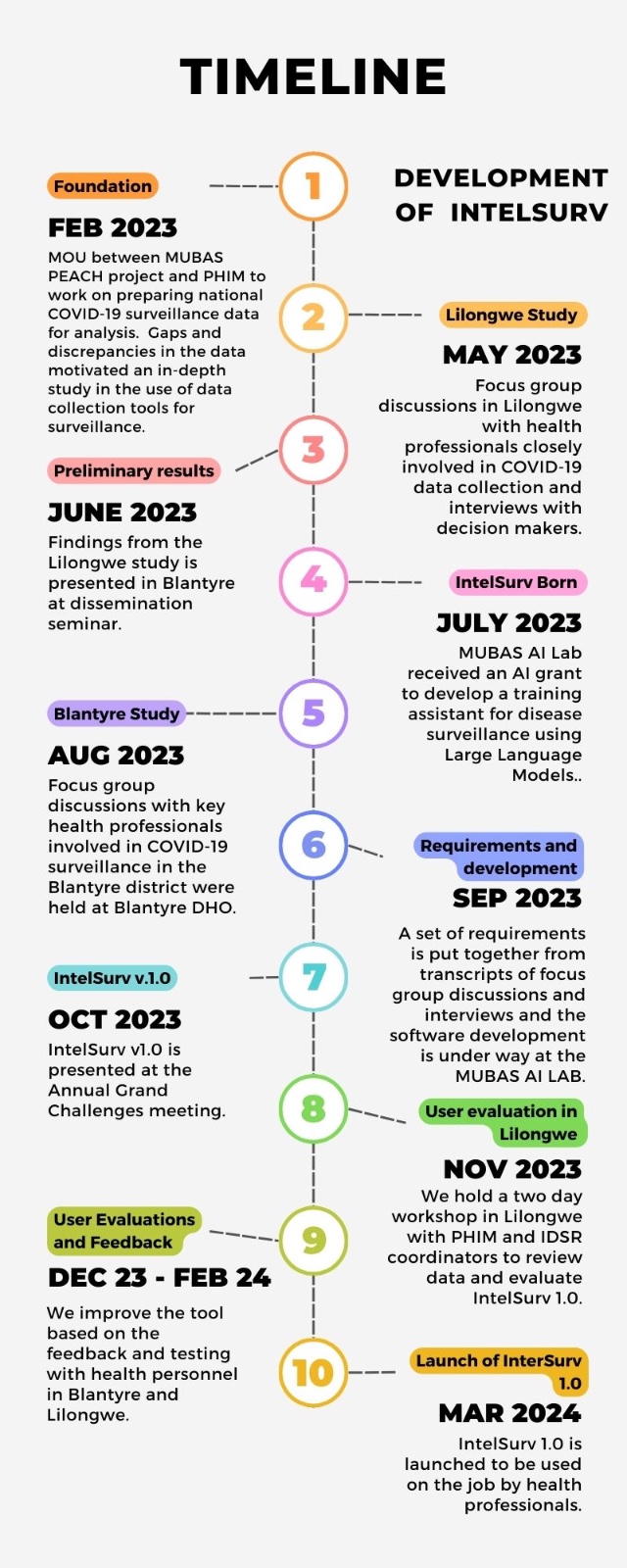
What is the IntelSurv tool
IntelSurv uses Large Language Models (LLMs) to achieve the ‘chat’-like functionality where users ask questions about disease surveillance. IntelSurv looks within its ‘trained’ knowledge to provide a suitable answer. A large language model (LLM) is a ‘deep learning’ algorithm that can perform a variety of Natural Language (NLP) tasks, such as question and answering, summarising information, extracting data from text and so on. ‘Deep learning’ algorithms are those using complex structures for encoding and representing information which mimic the layered structures of the human brain see as a network of neuron, or in the language of computer science, processing units. LLMs use massive datasets of text which is stored in their memory and processed in a way that can be then utilised in a variety of NLP tasks. IntelSurv uses LLMs to achieve the ‘chat’-like functionality where users ask questions about disease surveillance and IntelSurv looks within its ‘trained’ knowledge to provide a suitable answer.
List of Functionalities for IntelSurv
- IntelSurv lists the contents of disease surveillance forms and their fields.
- IntelSurv knows and provides definitions and information about abbreviations used by the CBSR form.
- IntelSurv knows and provides information about how to fill in specific fields.
- IntelSurv knows and answers questions about case definitions.
- IntelSurv knows and answers questions about guidelines and processes involved in disease surveillance.
- IntelSurv collects and records questions in a log which can then be passed on to PHIM to engage in answering new or more complex questions.
Types of questions IntelSurv can answer
There are four types of questions that IntelSurv will be able to handle:
- Form and field information
- Case definitions knowledge and applications
- Disease Surveillance Processes
- General
Questions on form and fields encompass questions such as:
- Descriptions of fields
- Types of data that are captured and its format.
- Rationale of the field and the purpose for which the data is collected.
- Information regarding options present on the form for fields.
- Definitions of abbreviation used.
Our Timeline

